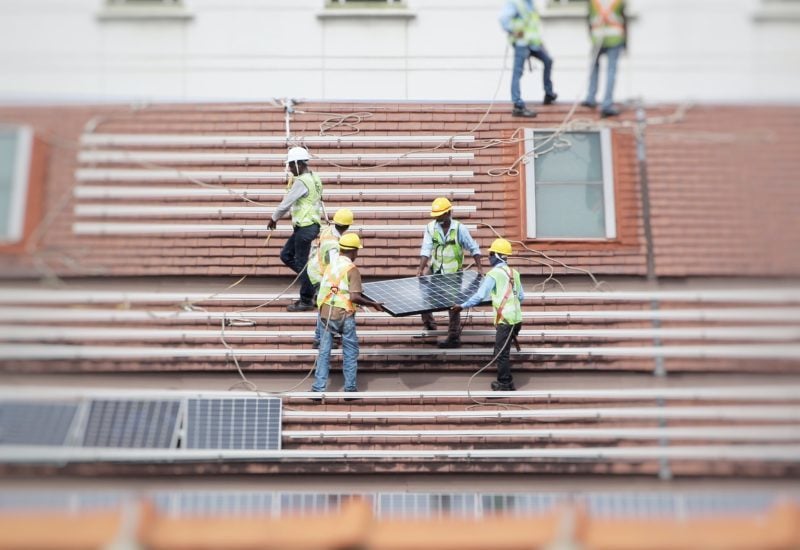
US residential solar prices have remained at historic lows in the first half of the year despite market uncertainty and continued high interest rates.
This is according to the latest market report from US clean energy comparison marketplace EnergySage, which found that the median price of a US residential solar installation in H1 2025 was US$2.48 per watt, the same as in the second half of 2024.
Try Premium for just $1
- Full premium access for the first month at only $1
- Converts to an annual rate after 30 days unless cancelled
- Cancel anytime during the trial period
Premium Benefits
- Expert industry analysis and interviews
- Digital access to PV Tech Power journal
- Exclusive event discounts
Or get the full Premium subscription right away
Or continue reading this article for free
Price stability held true for both standalone solar and solar-plus-storage systems, the report said. Solar-only installations saw a 0.4% price increase, while systems with energy storage saw no change at all.
At US$2.58/W, the average 11.7kW system costs US$29,016 before any tax incentives, EnergySage said.
Solar installers are reportedly absorbing the cost of high interest rates and subsequently falling appetite for long-term financing, the report said, “rather than raise prices ahead of anticipated policy changes.”
Confidence is down
Those policy changes will begin to bite in the second half of the year and into 2026, EnergySage said. Most obviously, the changes in the “One, Big, Beautiful Bill” act, which removed the 30% tax credit for customer-owned residential solar systems after the end of the year but retained the credit for third-party-owned (TPO) systems for longer.
EnergySage’s report surveyed US solar contractors to get their perspective on the market. The result showed waning confidence in the future of the industry; 55% of respondents said they were less confident than one year ago, 45% reported less consumer demand, and 54% saw unfavourable prospects for the industry under the Trump administration.
On specific policy changes, tariffs on solar equipment garnered a 70% negative reaction from solar contractors, who foresaw “negative business impacts”, 19.4% of whom thought tariffs would “dramatically harm” their businesses.
92% of contractors said removing the 30% federal tax credit would harm their operations, with 64% expecting “dramatic” harm. This is because US consumers primarily (73%) buy solar systems to save money, which is made harder by the changes in the “OBBB”.
This survey broadly accords with research published by market analyst Wood Mackenzie last month, which predicted that the US residential solar market would slow in the next four years without the tax credit incentive but would ultimately represent a large part of the US energy mix in the long-term.






